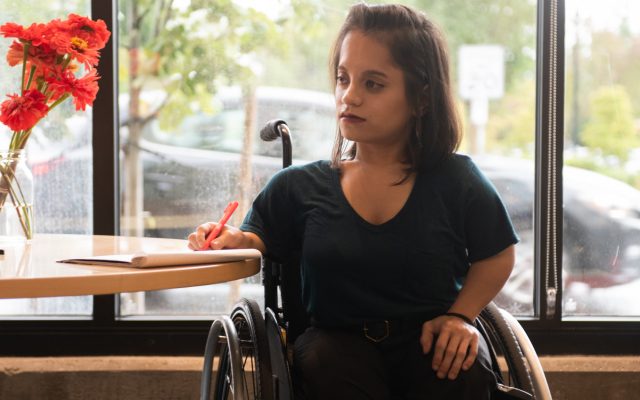
Ten tips for building evaluative thinking into team planning
When it comes to strategic team planning, a neutral, external voice can help teams to navigate the process of identifying goals for the year to come and allocating resources effectively.
We’ve found that integrating evaluative thinking can strengthen the process – by developing and reviewing program logics to inform planning activities.
This approach can be viewed in the same way as a long hike – we start out by mapping our path (program planning). When we’re on the way to our destination we stop occasionally, pulling out a compass and map to reorient ourselves (team planning), but, for the most part, we are following the path or the natural boundaries to find our way (day-to-day program delivery). The middle step – where we stop and reorient ourselves – is where we link what we do back to the broader program plan and logic.
Our top ten tips
To help deliver an effective planning day that integrates evaluative thinking, here are our top ten tips.
- Prepare, prepare, prepare. It is crucial, especially as an external facilitator, to understand the context of the program and the team. Ahead of planning days, we meet with the client to get a sense of their expectations and review background documentation, before developing an agenda and agreeing on appropriate activities for the day.
- Take it off-site. Having a different venue can break people out of their regular patterns and enable creative thinking. It also helps people focus on the bigger picture by taking away the temptation to duck back to the desk to respond to emails or get a little extra work done.
- Have a neutral facilitator. Having a neutral facilitator, either external to your company or at the very least to your team, has immense benefits for the planning process. First and foremost, it means that all team members have the ability to participate fully in the planning process rather than having someone within the team focused on the logistics of the meeting. Secondly, a neutral facilitator can act as a sounding board that reflects and interprets ideas back to the team to clarify thinking and sometimes introduce fresh interpretations. Finally, a neutral facilitator can moderate tensions in discussions that could potentially derail the planning process. They can help maintain focus on the tasks at hand.
- Start with strategy. The first activity of the day (after a quick introduction and icebreaker) is to understand the strategy and rationale for the team. Where available, this involves reviewing the logic model for the team’s programs and the associated outcomes framework. The planning day presents an opportunity to check in and question whether goals and assumptions are still relevant. Placing this activity at the start of the day gets the cognitively most difficult part of the day out of the way and sets a roadmap for the rest of the day’s activities, centred on the program.
- Visualise the situation. After clarifying the program logic, move to a more visual exercise to help the team link the abstract concepts of the program and program logic with practical implications for activities and priorities. At our recent planning days, we have asked team members to identify on a whiteboard their key deliverables for the next twelve months, then map out the associated milestones for the year. Even in its draft state (we digitise the results after the session), teams are already able to see bottlenecks in activity and availability. For some team members, this is a moment where they realise the level of work being undertaken by their colleagues, building a greater degree of empathy and support between team members.
- Match the activities to the energy levels. We put the more cognitively demanding activities early in the day to match the energy levels of the team. We keep energy levels up throughout the morning by having short breaks for coffee and snacks. Lunch and afternoon sessions are more relaxed and creative, giving people a chance to decompress after the hard work of the morning.
- Get outdoors. You can build on the benefits of planning off-site by including an outdoor session that further breaks people out of their usual thinking. At our recent planning days, after a short lunch break we held team building activities and relaxation in a park.
- Tailor your team building activities to the team. In our planning process, we put forward a ‘menu’ of team-building activities to our clients, which cover different types, styles and goals. We work with clients to select a set of activities that align with their goals for the team and their teamwork needs. For example, we have used outdoor settings to do breathing and relaxation activities, before some light, physical problem-solving exercises (matching the physicality of the exercise to the capabilities of the team), and a photography challenge where team members pair up randomly and work together to collect a set of images using their smartphones. While all these activities are designed to be fun, each is linked back to the bigger picture by asking the team to reflect on the activity and think how what they did can apply in their day-to-day work. Even when a team manages to solve exercises quickly and easily (and they often will), they can still think about and identify what it was that achieved this outcome.
- Bring it together. The final session of the day should be the most laid back, but still productive. It’s a chance to take the outcomes of the first sessions and link them together. The aim is to reduce the abstract logic to daily practice, prioritise the activities that are most important to achieving the goals of the logic, and make sure that the team has resources allocated to support these activities. Having the map of milestones and deliverables helps with this as you can move activities of lower priority and balance resources across the team. While in day-to-day work, it is usually the role of a manager to monitor and execute this, having it as part of the team planning process helps give the whole team ownership of it, and allows team members to feel heard. Seeing the whole team’s activities and allocating resources also gives team members a chance to put their hands up to be involved in work that can contribute to their personal and professional development goals.
- Reflect and act. Before everyone leaves for the day, get the team to reflect on the planning process and identify actions that they are going to take as a result. The most successful planning days are those that can be connected into the ‘day-to-day’ as soon as possible. Even though the planning day officially finishes after this, the work from the day doesn’t. Compile the notes from the day, digitise any visuals (such as the map of deliverables) and put it all straight into practice. Also, make something to remember. For a recent engagement, we got all the photos from the team challenge and compiled them into a poster, which we presented to the team as a memento of the day and their successful work.
Applying these tips, you can work with teams to deliver planning days that help focus thinking and achieve goals, as well as build team cohesion and rapport. More than this, we have been thinking how we can apply some of these ideas in our day-to-day work here at ARTD. We’re using our own staff as testers for new team building activities – these break-out sessions may just become a regular part of the organisational culture.




